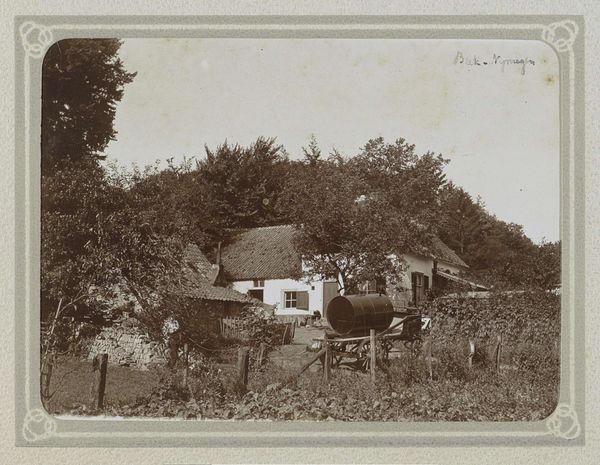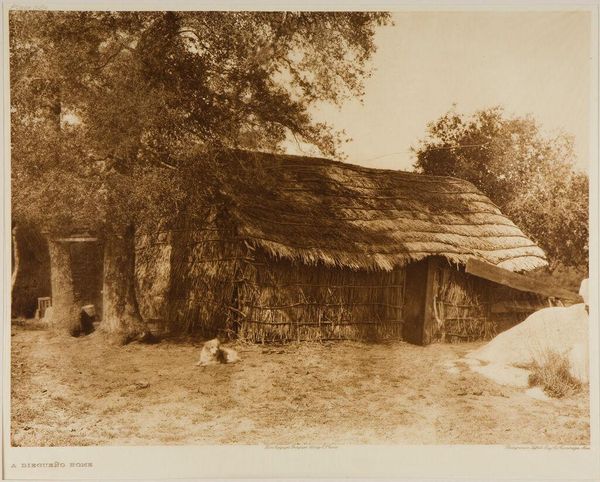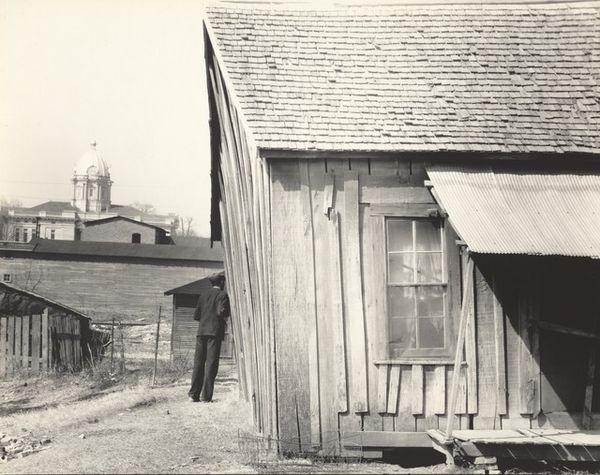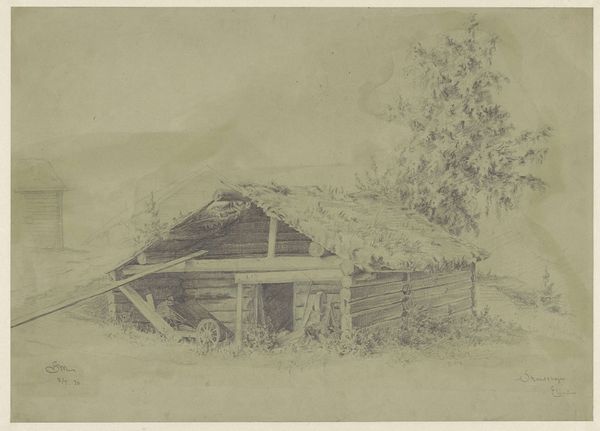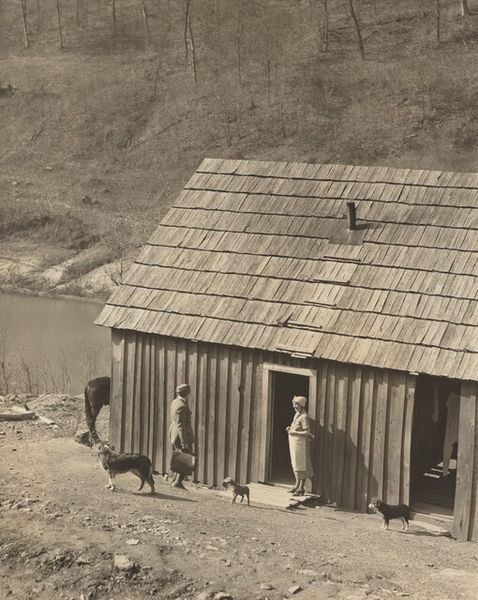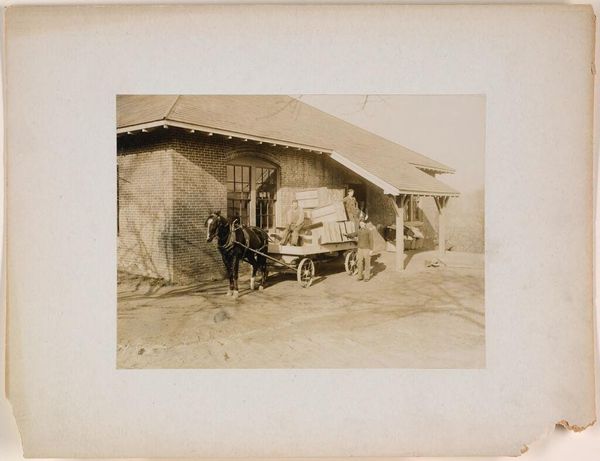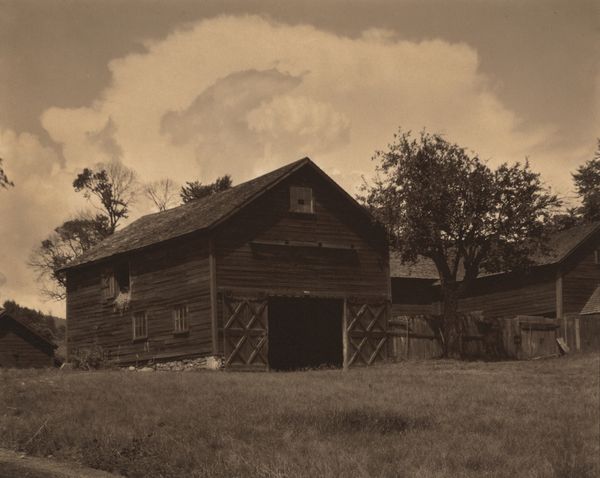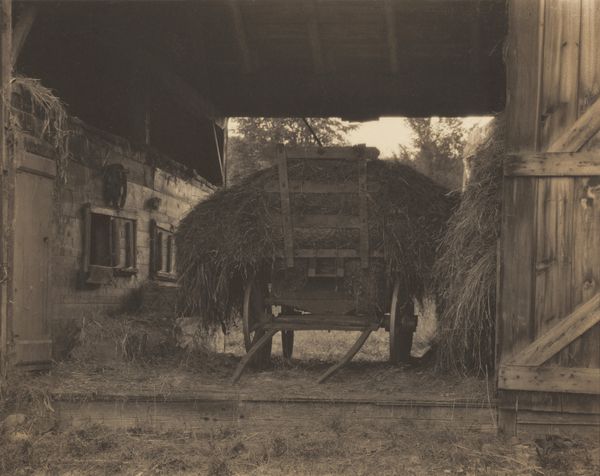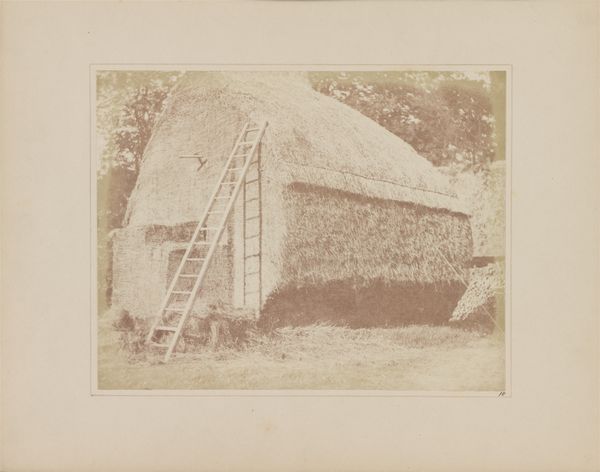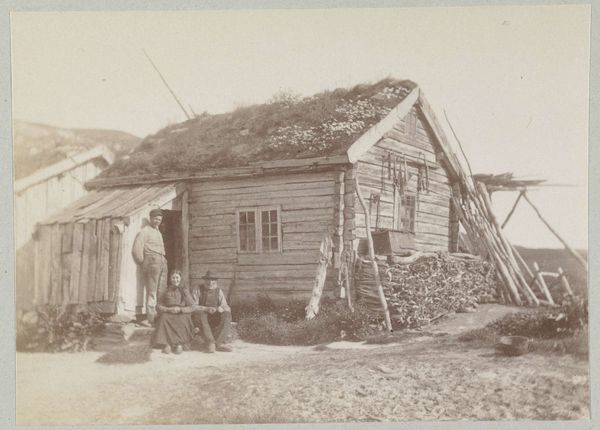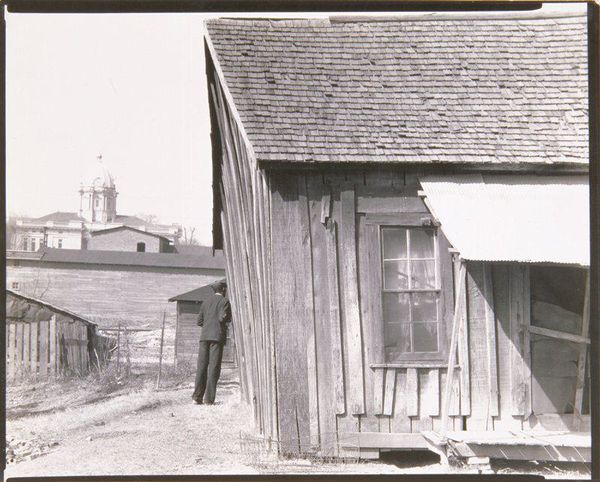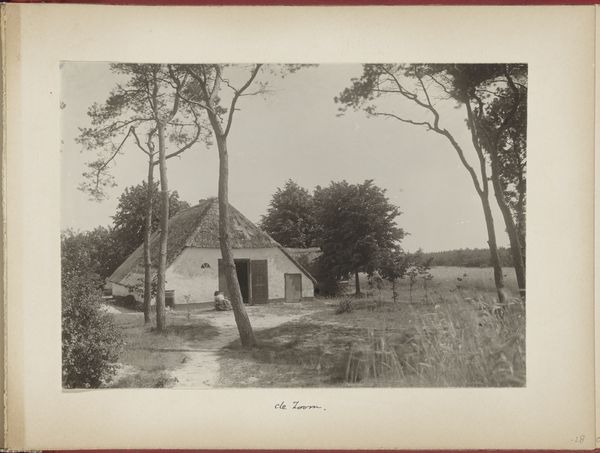
photography, gelatin-silver-print, architecture
#
archive photography
#
photography
#
historical photography
#
gelatin-silver-print
#
architecture
Dimensions: 30 × 39.2 cm (image); 35 × 42.5 cm (paper); 46.1 × 56.1 cm (mount)
Copyright: Public Domain
Editor: This is Edward S. Curtis’s gelatin silver print, "A Mat House - Skokomish," created in 1912. It features what appears to be a dwelling constructed from woven materials, set against a somewhat blurred background of trees. I find the sepia tone quite evocative. How do you interpret this work through a formalist lens? Curator: Observe how the light rakes across the textured surface of the mat house, emphasizing its construction. The photograph itself, as a gelatin silver print, is materially interesting. Notice the tonality, ranging from dark browns in the undergrowth to softer highlights on the structure. The composition uses the dwelling as a central, rectangular form, contrasting with the organic shapes of the surrounding foliage. How does the use of line direct our gaze? Editor: The horizontal lines of the woven mats certainly dominate. And now that you mention it, the slight blur of the trees throws the clean geometry of the structure into sharper relief, emphasizing its almost artificial presence in the natural landscape. The repetition almost feels…industrial, though that clearly wasn’t the intention. Curator: Indeed. Consider also the picture plane itself – a flat surface rendered with tonal variation and distinct textures. Curtis manipulated the chemistry to achieve a particular mood through the interplay of light and dark on a sensitized surface. Does this manipulation enhance or detract from your appreciation of the photograph's content? Editor: I think it enhances it. Knowing the image wasn't simply "captured," but crafted and considered, invites me to dwell longer on the material itself and how it’s constructed to achieve its impact. Curator: Precisely. The photograph becomes a constructed object, drawing attention to its intrinsic qualities as an artwork, irrespective of its subject. We discover significance by analyzing internal construction. Editor: This was very insightful. Thank you for prompting me to think about art on a more profound level, beyond the context and the surface elements.
Comments
No comments
Be the first to comment and join the conversation on the ultimate creative platform.
